
2015 has been a good year for lovers of Japanese art in Boston. The city’s phenomenal Museum of Fine Arts has hosted not just one, but three special exhibitions of Japanese art so far this year, along with its newly restored Japanese garden outside. The most hyped of all of these is an exhibition dedicated solely to Katsushika Hokusai, one of the most important ukiyo-e painters and printmakers of the Edo period who’s best known as the creator of The Great Wave off Kanagawa.
Besides the Hokusai collection, the museum is also hosting a particularly powerful exhibit displaying the work of 17 photographers in the wake of the 2011 Tohoku triple disasters, along with a lighthearted exhibit showcasing prints of some whimsical Japanese toys and games. As all three of the exhibitions are preparing to wind down within the next few weeks after hosting thousands of visitors over the past months, we thought we’d take a moment to share some of their highlights with you!
Unbeknownst to me and many of my fellow New Englanders for a long time, Boston’s Museum of Fine Arts (hereafter MFA) prides itself on having the largest collection of Japanese art outside of Japan–and that’s no exaggeration. The collection is largely thanks to the efforts of one William Sturgis Bigelow (1850-1926), an American physician who journeyed to Japan in 1882 and ended up staying there for seven years. He became an avid collector of art and donated over 40,000 pieces to the museum upon his return to America. In fact, over 80 percent of the works of art in the current Hokusai exhibition are directly attributed to him.
We’ll provide brief synopses of the three Japanese exhibitions listed in the introduction of this piece, along with some photos from our Boston-based writer’s recent visit to check them out. Keep in mind that the MFA’s official website provides a wealth of background information on each of the exhibits, including slideshow previews of some of the work in each gallery for those of you who can’t make it to Boston in the very near future.
Hokusai
April 5, 2015-August 9, 2015
Gund Gallery (Gallery LG31)
Exhibition website
The MFA spared no expense promoting the Hokusai exhibit in the weeks leading up to its opening earlier this year. Advertisements were plastered on every imaginable surface in Boston; the exterior of the museum was even decorated with huge banners displaying The Great Wave (check out the picture at the top of this article), beating out another featured exhibition of Leonardo da Vinci’s sketches which opened only 10 days later. Various media praised its astounding comprehensiveness when it finally opened to the public on April 5.
▼ Local paper The Cape Cod Times advertising the exhibition back in April
This highly billed exhibition features over 200 works by the master artist over the span of his life, including the famous print Under the Wave Off Kanagawa (The Great Wave) from the 36 Views of Mt. Fuji series and an absolutely stunning multi-panel screen painting titled Phoenix (1835).
▼ The free brochure given out at the exhibition
Take a moment to watch these introductory video clips.
▼ A short preview of the exhibition
▼ A message from curator Sarah Thompson
The exhibit itself is divided into seven different areas, each easily distinguishable by a colored wall and a descriptive introductory text. In order of progression through the galleries, the six are Urban Pleasures, Views of Mt. Fuji, Waterfalls & Bridges, Ingenious Designs, Private Commissions, Nature Studies, and Legend & Literature.
Let’s take a look now at some of the featured art (Note: We apologize for the dim lighting in some of these photos, but flash photography is not permitted in the galleries).
▼ This sign is the first thing you see as you walk into the gallery.
▼ A steady stream of people was in the Urban Pleasures gallery, as well as a traditional koto instrument.
▼ I found this boar to be incredibly endearing, somehow.
Though the views of Mt. Fuji, bridges, and waterfalls prints were undeniably exquisite, I thought that some of the lesser known pictures in the Nature Studies gallery were incredibly refreshing:
▼ One corner in the last area was dedicated to the printmaking process, showing the various tools used when making a woodblock print.
▼ The procedure was then illustrated using prints of The Great Wave at various stages of completion.
Upon exiting the exhibition, visitors pass through an entirely Hokusai-themed gift shop (what tactical genius!). The shop also includes a variety of general Japan-themed items as well, and I had fun perusing the merchandise.
Out of the museum’s three temporary Japan-themed exhibitions, the Hokusai one will be open for the longest remaining time, until August 9. Be sure to stop by if you’re in the area!
Moving on…
In the Wake: Japanese Photographers Respond to 3/11
April 5, 2015-July 12, 2015
Foster Gallery (Gallery 158)
Exhibition website
The second of the featured exhibitions is titled In the Wake: Japanese Photographers Respond to 3/11, and explores the physical and emotional aftermath of the 2011 Tohoku earthquake, tsunami, and nuclear meltdown through photographs taken by 17 Japanese photographers.
As someone who lived in the Tohoku region of Japan, knew people who were directly affected by the tsunami, and volunteered in a disaster area, I was very much intrigued by this exhibition, though with a bit of trepidation. While the space was much smaller than that of the Hokusai exhibition, it still packed a powerful emotional punch, accentuated even more so by the eerie silence that seemed to affect all visitors to the room.
▼ The entryway to the exhibition, located right outside of one of the MFA’s main gift shops and cafes
While I didn’t take any pictures of the many photographs in the gallery, there was one area in the back corner which showed a looping video of the tsunami sweeping across land on March 11, 2011. Several people sat here entranced, watching the horrific scenes from four years ago as they played over and over again.
▼ A closer view of the TV screen
Located directly behind that display was a large image of an evacuated street in Fukushima, near the Daiichi power plant. Upon closer inspection, I realized that the picture was actually a video, completely still except for blades of grass waving in the breeze and the flickering of a traffic signal. The visual was also accompanied by a high-pitched, constant beeping sound, which was revealed to be an actual recording of the warning signal given off by a radiation detector belonging to the person who filmed this scene.
Despite the above displays and the photographs of tsunami rubble that have become permanently imprinted in my mind, for me, the most moving work in the entire exhibit was a relatively simple one consisting of dozens of personal photographs arranged on a wall, all with ink smeared to varying degrees:
These weren’t just any photographs, however–they once belonged to people just like you and me, but were lost and then recovered in the waters of the tsunami. Here’s the brief description for the display:
Unfortunately, In the Wake will end its run on July 12, so anyone not in the immediate vicinity probably won’t have a chance to get to the museum in time to see it. However, a book chronicling the exhibition can be purchased here instead.
Playing with Paper: Japanese Toy Prints
September 13, 2014-July 19, 2015
Japanese Print Gallery (Gallery 278A)
Exhibition website
In contrast to the previous exhibition, this one is all fun and games–literally. Composed of a single gallery in the MFA’s Art of Asia wing, it’s an interesting glimpse into a facet of daily life that we don’t usually think about when we consider life in Edo period-Japan. Included in the gallery are prints depicting a variety of board games, paper dolls, cutout dioramas, and pictorial riddles that Japanese people enjoyed in 19th century.
I didn’t have enough time to check out this exhibit after the Hokusai and In the Wake ones, but I had gone to see it earlier in the year and it was quite enjoyable. The works in this gallery will be available for viewing until July 12, one week later than the ones in In the Wake.
If you’re an enthusiastic lover of Japanese art and have already exhausted the three museum exhibits described above, make sure you don’t overlook the MFA’s permanent galleries of Japanese art as well! Besides the Arts of Japan gallery, which features both ancient and contemporary works, the museum is well-known for its Japanese Buddhist Temple Room. This room was designed in 1909 by adapting elements of the plans used for the main hall of Horyu-ji, an important temple in Nara and one of the oldest wooden buildings left in the world.
Lastly, Japanese art makes an appearance in the exterior of the MFA in the form of a traditional Japanese viewing garden called Tenshin-en. The garden was dedicated in 1988 to a former curator of Chinese and Japanese Art at the museum and is occasionally the site of Japanese tea ceremony events. According to its website,
“Representing a unique merging of two cultures, Tenshin-en combines the profound symbolism of a Japanese garden with a feeling that evokes the rocky coastline and deep forests of New England.”
The garden was closed for one year for restoration, and it reopened again this past April to coincide with the Hokusai and In the Wake exhibits. If you’re in the area, why not stop by for a few moments of quiet meditation in a serene setting?
▼ Maybe you can even get a sweet rainbow in the corner of your picture, like I did!
Museum Information
Museum of Fine Arts, Boston
Address: 465 Huntington Ave, Boston, MA 02115 USA
Open Saturday-Tuesday 10 a.m.-4:45 p.m., Wednesday-Friday 10 a.m.-9:45 p.m.
Tel: 1-860-617-267-9300
Website: www.mfa.org
Detailed ticket and pricing information can be found at the website listed above. Here’s a little hint, though–Wednesday nights after 4 p.m. is admission by voluntary contribution only!
Sources: Boston Museum of Fine Arts, Boston Globe, Wikipedia (William Sturgis Bigelow)
All images © RocketNews24 unless otherwise noted.

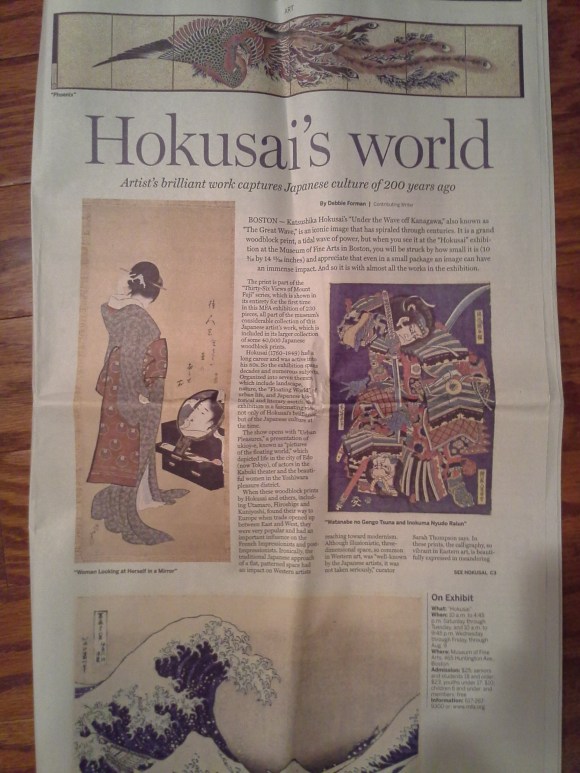












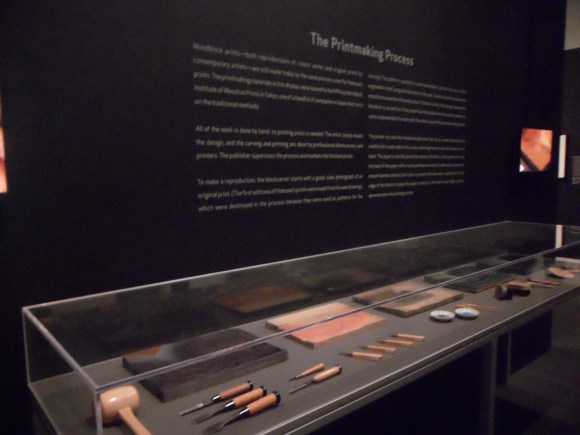

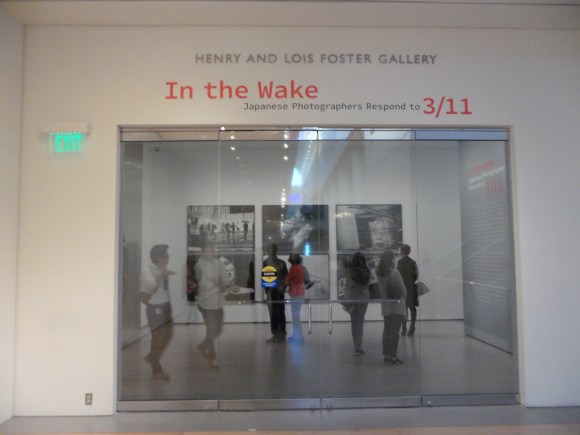



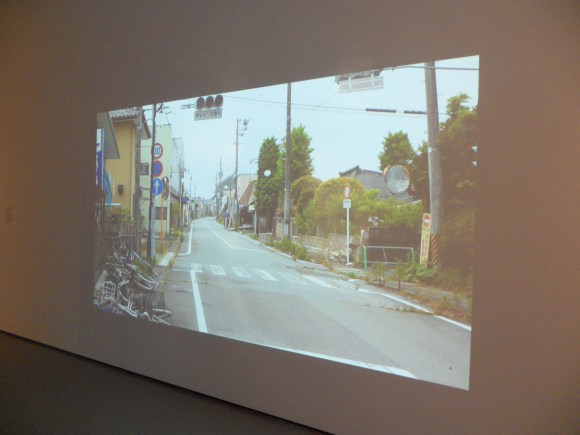
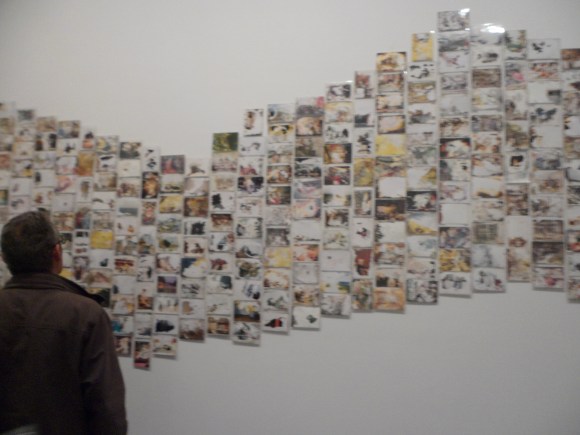

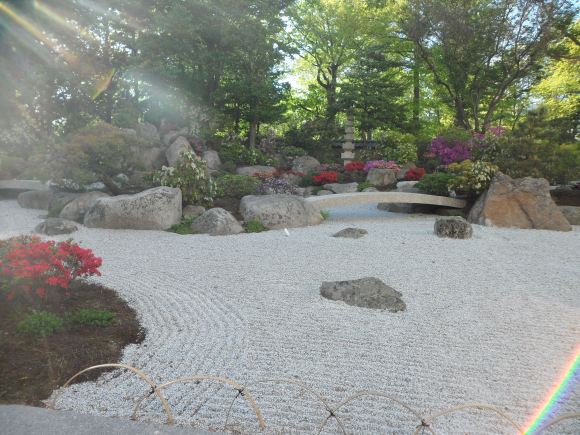
 Master Lego builder’s Great Wave off Kanagawa making move across ocean for Hokusai event【Photos】
Master Lego builder’s Great Wave off Kanagawa making move across ocean for Hokusai event【Photos】 Upcoming themed cafe answers the question “What if Hokusai had opened an eatery?”
Upcoming themed cafe answers the question “What if Hokusai had opened an eatery?” Stunning ukiyo-e art experience floats over to Tokyo for its latest exhibition
Stunning ukiyo-e art experience floats over to Tokyo for its latest exhibition Amazing ukiyo-e art exhibit gives you the chance to step inside a woodblock print and snap photos
Amazing ukiyo-e art exhibit gives you the chance to step inside a woodblock print and snap photos These figures for an upcoming ukiyo-e exhibit are perfect for cat-lovers and art-lovers alike!
These figures for an upcoming ukiyo-e exhibit are perfect for cat-lovers and art-lovers alike! 10 times to avoid traveling in Japan in 2026
10 times to avoid traveling in Japan in 2026 We ate sushi made from Japan’s most expensive tuna ever【Taste test】
We ate sushi made from Japan’s most expensive tuna ever【Taste test】 Umamusume anime girl plushie recalled for having parts she absolutely should not have【Pics】
Umamusume anime girl plushie recalled for having parts she absolutely should not have【Pics】 Ramen restaurant’s English menu prices are nearly double its Japanese ones, denies discriminating
Ramen restaurant’s English menu prices are nearly double its Japanese ones, denies discriminating This quiet forest cafe in Japan lets you read all day in the house of a famous author
This quiet forest cafe in Japan lets you read all day in the house of a famous author 7 great places to see Mt. Fuji from without having to climb it
7 great places to see Mt. Fuji from without having to climb it 7-Eleven Japan starts new temporary luggage storage service in over 300 branches
7-Eleven Japan starts new temporary luggage storage service in over 300 branches The Purple Lucky Bag from Village Vanguard is an extra-large waste of money
The Purple Lucky Bag from Village Vanguard is an extra-large waste of money This balding middle-aged fairy is one of Japan’s most unique mascot characters
This balding middle-aged fairy is one of Japan’s most unique mascot characters Bandai to release super-mega-retro-robot made up of Doraemon and friends
Bandai to release super-mega-retro-robot made up of Doraemon and friends Japanese beef bowl chain Sukiya’s 2026 Smile Box lucky bag basically pays for itself
Japanese beef bowl chain Sukiya’s 2026 Smile Box lucky bag basically pays for itself Starbucks Japan ready to get Year of the Horse started with adorable drinkware and plushies【Pics】
Starbucks Japan ready to get Year of the Horse started with adorable drinkware and plushies【Pics】 Hayao Miyazaki says Happy New Year to Studio Ghibli fans with new art for Year of the Horse
Hayao Miyazaki says Happy New Year to Studio Ghibli fans with new art for Year of the Horse Cup Noodle tries an authentic Jiro-style ramen, but something’s not quite right
Cup Noodle tries an authentic Jiro-style ramen, but something’s not quite right Top Japanese cosplayer Enako returns to Comiket after 6 years, creates mayhem with admirers
Top Japanese cosplayer Enako returns to Comiket after 6 years, creates mayhem with admirers The best Starbucks Japan Frappuccinos we want to drink again in 2026
The best Starbucks Japan Frappuccinos we want to drink again in 2026 We revisited Sweets Paradise after a decade to see if Japan’s dessert buffet still delivers
We revisited Sweets Paradise after a decade to see if Japan’s dessert buffet still delivers That time Seiji called JASRAC to ask why he didn’t get paid royalties for his song being on TV
That time Seiji called JASRAC to ask why he didn’t get paid royalties for his song being on TV Pizza Hut Japan’s hot lucky bags are perfect for a New Year’s pizza party
Pizza Hut Japan’s hot lucky bags are perfect for a New Year’s pizza party Majority of Japanese mayors say foreign residents are essential but most see good and bad effects
Majority of Japanese mayors say foreign residents are essential but most see good and bad effects Disillusionment at Tsukiji’s tourist-target prices led us to a great ramen restaurant in Tokyo
Disillusionment at Tsukiji’s tourist-target prices led us to a great ramen restaurant in Tokyo Starbucks teams up with 166-year-old Kyoto doll maker for Year of the Horse decorations【Photos】
Starbucks teams up with 166-year-old Kyoto doll maker for Year of the Horse decorations【Photos】 Tokyo considering law requiring more trash cans following litter increase in heavily touristed area
Tokyo considering law requiring more trash cans following litter increase in heavily touristed area Tokyo’s Tsukiji sushi neighborhood asks tour groups to stay away for the rest of the month
Tokyo’s Tsukiji sushi neighborhood asks tour groups to stay away for the rest of the month Tokyo event lets you travel back in time, for free, to celebrate 100 years since Showa era start
Tokyo event lets you travel back in time, for free, to celebrate 100 years since Showa era start Japan may add Japanese language proficiency, lifestyle classes to permanent foreign resident requirements
Japan may add Japanese language proficiency, lifestyle classes to permanent foreign resident requirements Sanrio theme park in Japan announces plans to expand into a Sanrio resort
Sanrio theme park in Japan announces plans to expand into a Sanrio resort Lacquerware supplier to emperor of Japan and Pokémon team up for new tableware
Lacquerware supplier to emperor of Japan and Pokémon team up for new tableware Survey asks foreign tourists what bothered them in Japan, more than half gave same answer
Survey asks foreign tourists what bothered them in Japan, more than half gave same answer Japan’s human washing machines will go on sale to general public, demos to be held in Tokyo
Japan’s human washing machines will go on sale to general public, demos to be held in Tokyo Japan’s deadliest food claims more victims, but why do people keep eating it for New Year’s?
Japan’s deadliest food claims more victims, but why do people keep eating it for New Year’s? We deeply regret going into this tunnel on our walk in the mountains of Japan
We deeply regret going into this tunnel on our walk in the mountains of Japan Studio Ghibli releases Kodama forest spirits from Princess Mononoke to light up your home
Studio Ghibli releases Kodama forest spirits from Princess Mononoke to light up your home Major Japanese hotel chain says reservations via overseas booking sites may not be valid
Major Japanese hotel chain says reservations via overseas booking sites may not be valid Put sesame oil in your coffee? Japanese maker says it’s the best way to start your day【Taste test】
Put sesame oil in your coffee? Japanese maker says it’s the best way to start your day【Taste test】 No more using real katana for tourism activities, Japan’s National Police Agency says
No more using real katana for tourism activities, Japan’s National Police Agency says Starbucks Japan reveals new sakura drinkware collection, inspired by evening cherry blossoms
Starbucks Japan reveals new sakura drinkware collection, inspired by evening cherry blossoms Updated cherry blossom forecast shows extra-long sakura season for Japan this year
Updated cherry blossom forecast shows extra-long sakura season for Japan this year Macabre Japanese ukiyo-e reveal gothic side to art of the floating world【Pics】
Macabre Japanese ukiyo-e reveal gothic side to art of the floating world【Pics】 Beautiful ukiyo-e woodblock print artwork appears on three of Japan’s premium beer brands
Beautiful ukiyo-e woodblock print artwork appears on three of Japan’s premium beer brands Uniqlo Ukiyo-e Blue T-shirts: A cool-hued reinterpretation of some of Japan’s greatest paintings
Uniqlo Ukiyo-e Blue T-shirts: A cool-hued reinterpretation of some of Japan’s greatest paintings Japanese art has never looked quite as beautiful as when it’s made out of Japanese beef【Photos】
Japanese art has never looked quite as beautiful as when it’s made out of Japanese beef【Photos】 Cafe turns Japan’s most beautiful paintings into beautiful shaved ice dessert drinks【Photos】
Cafe turns Japan’s most beautiful paintings into beautiful shaved ice dessert drinks【Photos】 We make a gorgeous wooden art display piece out of Hokusai’s Great Wave
We make a gorgeous wooden art display piece out of Hokusai’s Great Wave New Mt Fuji bra set lets you wear Japanese art under your clothes
New Mt Fuji bra set lets you wear Japanese art under your clothes Converse All-Stars team up with two all-stars of Japanese art for Wave, Skull ukiyo-e shoes【Pics】
Converse All-Stars team up with two all-stars of Japanese art for Wave, Skull ukiyo-e shoes【Pics】 Artist recreates famous Japanese ukiyo-e paintings using fine wines
Artist recreates famous Japanese ukiyo-e paintings using fine wines Admission is $30 and all the paintings are fakes – so why is the Otsuka Museum of Art so popular?
Admission is $30 and all the paintings are fakes – so why is the Otsuka Museum of Art so popular? Japanese fine art and pill bugs finally become one in BugArts Ukiyo-e series
Japanese fine art and pill bugs finally become one in BugArts Ukiyo-e series Studio Ghibli involved in six great art exhibitions that you just have to see this summer
Studio Ghibli involved in six great art exhibitions that you just have to see this summer Felissimo releases limited-edition “Color in Edo! Hokusai Colored Pencils” set
Felissimo releases limited-edition “Color in Edo! Hokusai Colored Pencils” set Tokyo’s beautiful new license plates are based on one of Japan’s most famous woodblock paintings
Tokyo’s beautiful new license plates are based on one of Japan’s most famous woodblock paintings Dr. Martens’ Thirty-six Views of Mt. Fuji collection is a work of wearable art
Dr. Martens’ Thirty-six Views of Mt. Fuji collection is a work of wearable art
Leave a Reply